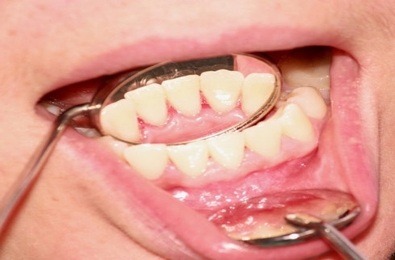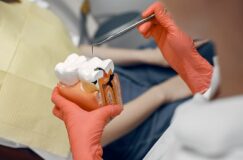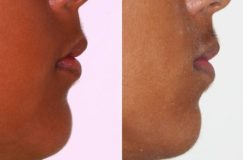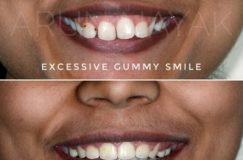Today I am here again to tell you something important. Your gums hold your teeth strong. If they get sick, your teeth can fall out. This sickness is called gum disease. It’s very common. Many people don’t know they have it until it’s bad. Keep your gums healthy with brushing and check-ups. That’s how you stay safe.
Now you will ask me various questions like – How to stop gum bleeding?
What causes gum disease? How to keep your gum healthy? And more! I am here to answer it all today…
What is gum disease and What causes gum disease?
There are two main types – Gingivitis and Periodontitis.
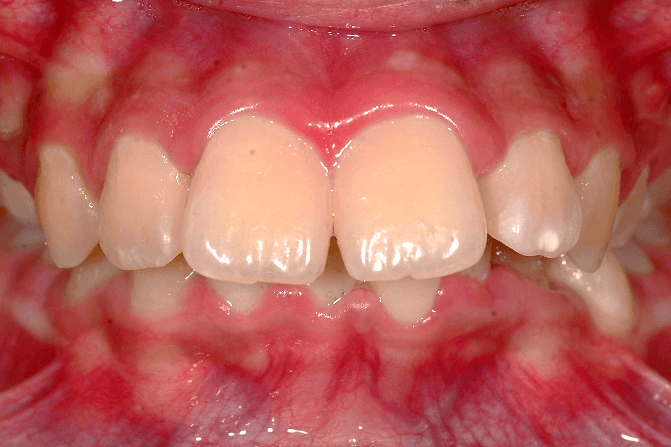
Gingivitis is the early stage. Your gums get red, swollen, and bleed easily, especially when brushing. It’s mostly caused by plaque – a sticky layer of germs on your teeth. If you clean your teeth well every day and visit the dentist, gingivitis can go away fully. It doesn’t damage the bone yet.
Now, if gingivitis is not treated, it turns into Periodontitis. This is more serious. The infection goes deeper. It damages the bone that holds your teeth. Over time, your teeth can become loose and even fall out. You may also feel bad breath or pus between your gums.
Treatment is different:
Gingivitis needs just proper brushing, flossing and maybe a cleaning from the dentist. But periodontitis needs deeper cleaning called scaling and root planing. Sometimes, surgery is needed. The dentist may use special medicines or even bone grafts to save your teeth.
According to WHO, gum disease affects about 1 in 5 people worldwide badly. But the good news? It can be stopped early!
What Are Different Types of Gum Disease
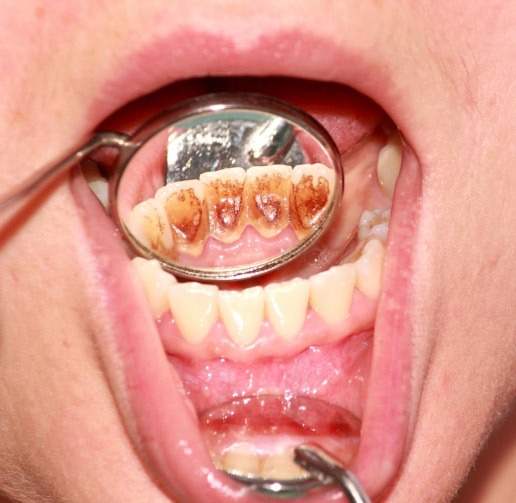
- First is gingivitis. It makes your gums red, swollen, and bleed. It comes from poor brushing. If caught early, it can be fully treated.
- If not treated in time, it turns into periodontitis. This is serious. Gums pull back or you have bleeding gums with teeth getting loose; the jaw bone is damaged. You may even lose teeth. Advanced stages need deep cleaning, medicine or surgery. Pain, bad breath and tooth loss are common. The World Health Organisation says many adults suffer silently. But it can be stopped. Don’t skip check-ups as early care saves your smile and health.
Common Signs and Symptoms of Gum Disease
Our body always signals you when something is wrong. Gums are no different. Please don’t ignore these signs:
- Red, swollen, or painful gums – This often means your gums are inflamed due to bacteria. It’s the first sign of gum disease, called gingivitis.
- Bleeding when brushing or flossing – Healthy gums don’t bleed. If yours do, it’s a warning of infection and should not be ignored.
- Bad breath that won’t go away – Persistent bad breath may come from hidden bacteria deep under the gums.
- Gums pulling away or loose teeth – This shows advanced gum damage. Teeth may loosen and fall out.
According to the WHO, severe gum disease affects nearly 19% of adults worldwide.
Want to know how to keep your gum healthy or how to stop gum bleeding? Start with good brushing, daily flossing and see a dentist soon. Early care can save your teeth and protect your overall health.
What Causes Gum Disease?
- Gum disease starts when germs (bacteria) stay on your teeth too long. This happens if you don’t brush or floss properly. Beyond giving bad breath, these germs form plaque, a sticky layer, which harms your gums.
- Smoking is another big reason. It weakens your gums and hides signs of disease, so you don’t notice it early.
- Diabetes is also dangerous. High sugar levels help germs grow and slow healing.
- Hormonal changes, like in pregnancy or menopause, make gums more sensitive. That means they swell and bleed easily.
- Some medicines cause dry mouth. Less saliva means more germs.
- Poor diet, stress and weak immune system also play a role towards bad gum health. See, your body tries to fight germs, but if there are too many, it fails due to low immunity caused by these 3 factors. And you end up having swollen gums.
How to Keep Your Gums Healthy for a Long-Term
- Brush twice a day using fluoride toothpaste. Use a soft brush. Clean gently along the gumline.
- Floss daily to remove food between teeth.
- If the issue is at Gingivitis stage only, then rinsing with an antibacterial mouthwash will also kill hidden germs.
- Eat less sugar; it feeds gum-damaging bacteria. Rinse your mouth or drink water after meals to ensure your teeth are clean till you brush them later.
- Don’t smoke—it weakens your gums.
- See a dentist every six months, even if nothing hurts. They clean deep areas you can’t reach.
Real Life Case Study
Let us tell you about Rajendra, a 45-year-old farmer. He ignored bad breath, bleeding gums/ Gingivitis for years. Slowly, his teeth started shaking. He thought it was normal with age. But it was gum disease. When he came to us in December 2024, he had already lost four teeth to advanced Periodontitis. We treated the infection promptly in a few weeks, but some damage couldn’t be reversed. Rajendra now uses dentures. This could have been avoided with early care.
Gum disease is silent at first but causes tooth loss very soon. Simple care today saves pain tomorrow.
CTA: Gum disease starts quietly. You may see blood when brushing. Gums may swell or hurt. Bad breath can stay even after cleaning. These signs mean your mouth needs help. If ignored, teeth can become loose. WHO reports that nearly 50% of adults suffer from gum disease. But early treatment can save your teeth. Dental care is not scary. It is simple and safe. Don’t wait for pain. Come before it’s too late. Your smile matters. So do your health and confidence.
Feel something is wrong? Trust your gut. Call Fort Dental Clinic now – because saving your smile starts today, not tomorrow.

